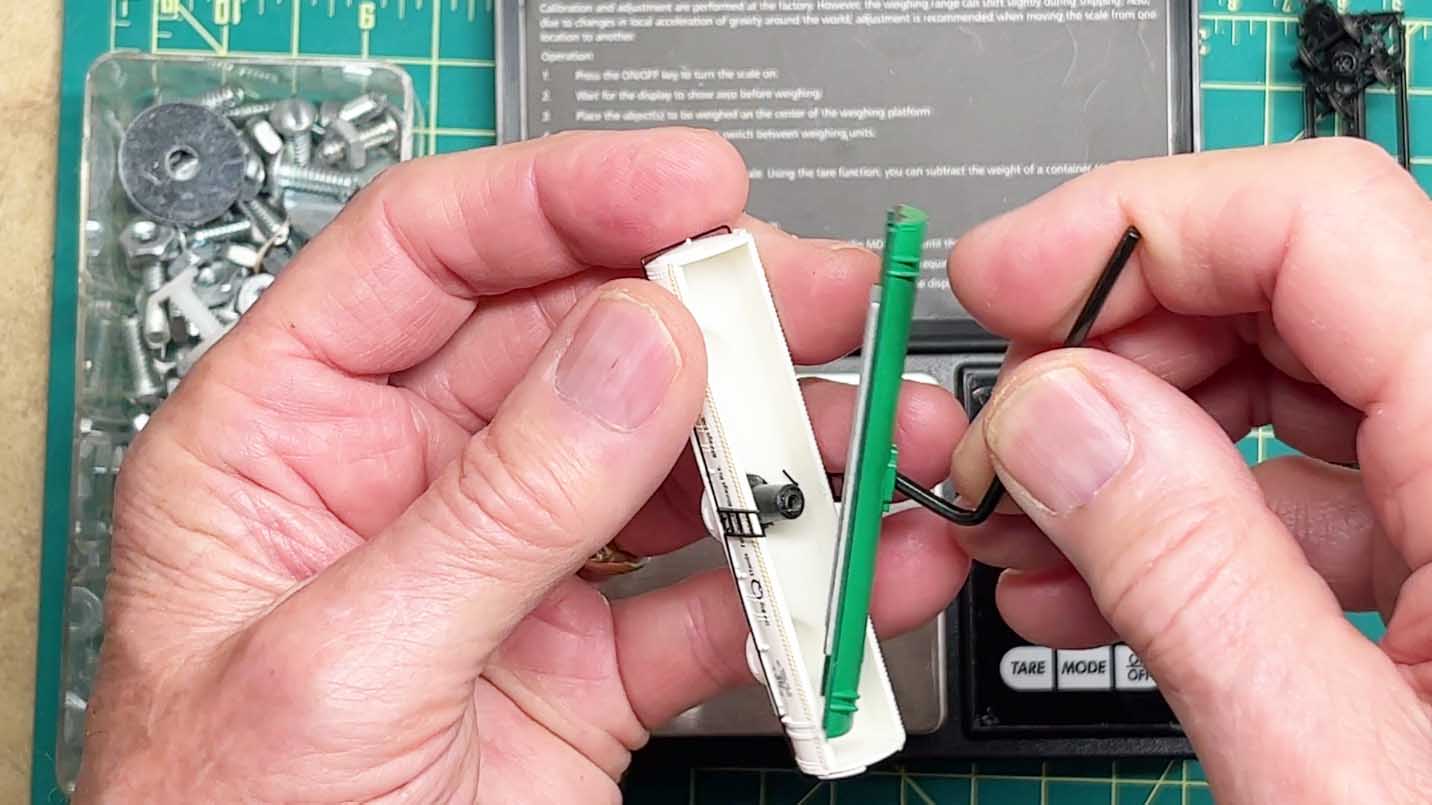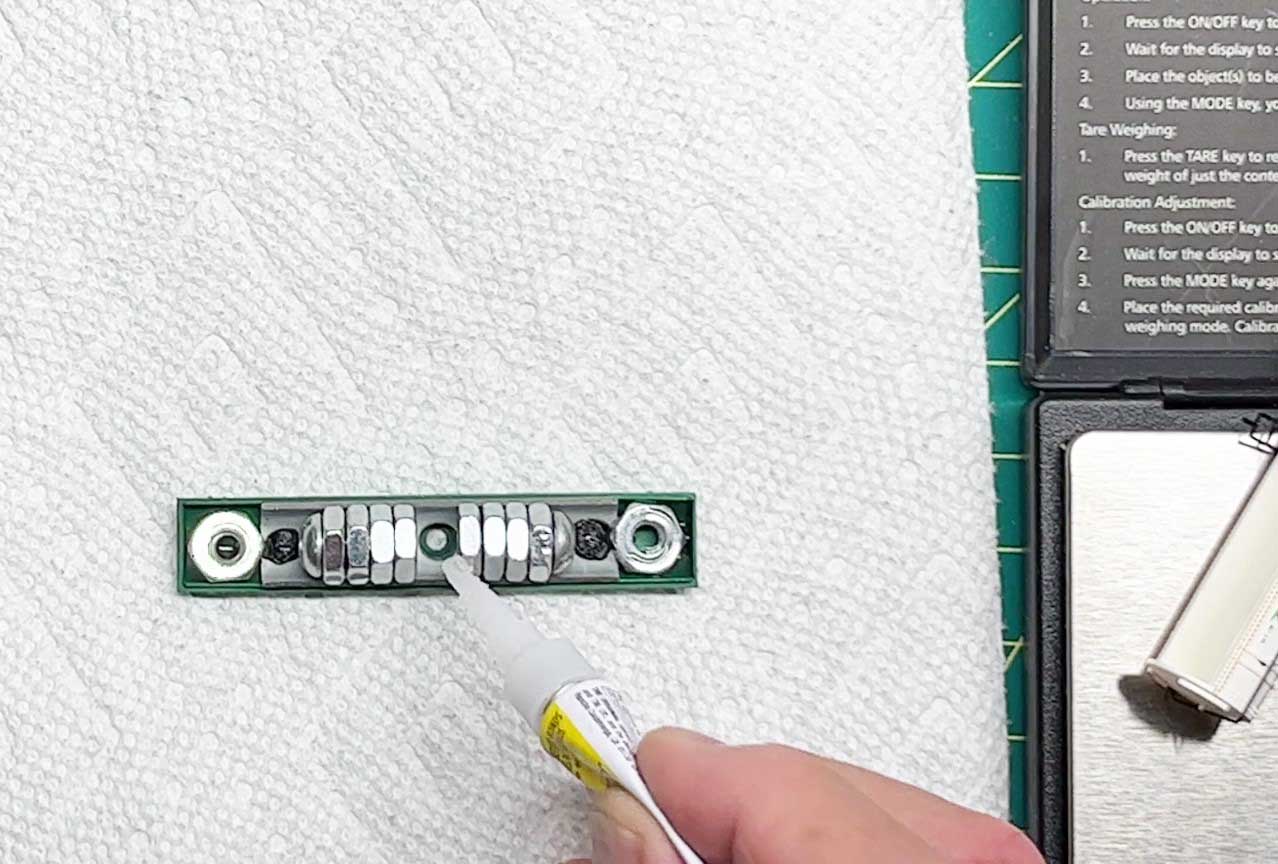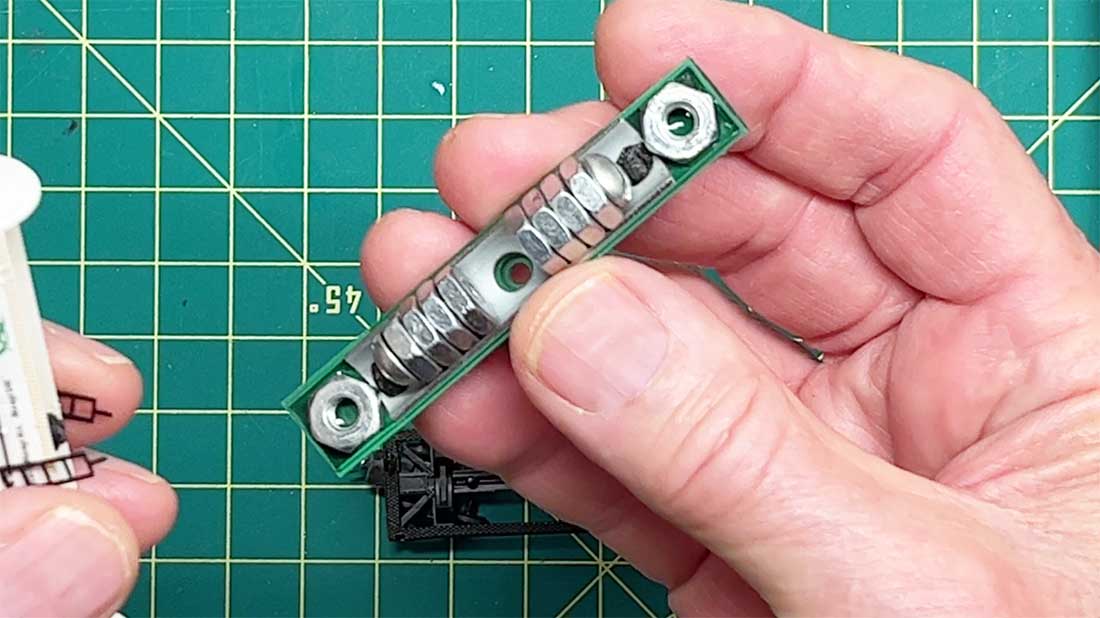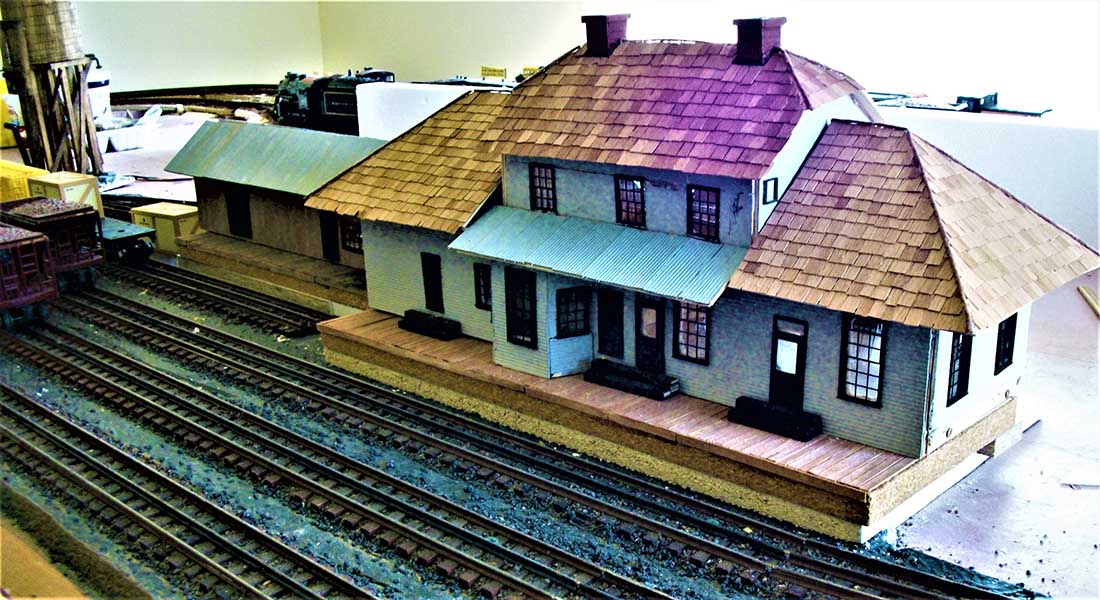Dean’s been back in touch with his rolling stock weight problem.
Thanks to you lot, he’s solved the issue of adding weight to his freight cars
Here’s his first post if you missed it: N scale weights.
“Al, cheers again from Dean in New Mexico.
This is a short follow-up to my last video on tuning up my freight cars.
In the earlier video I admitted that I couldn’t adjust the weight of my 3-dome tank car because I couldn’t think of a way to add weights.
There was a good response in your blog with several suggestions from your readers. One reader suggested I pour sand through the small holes in the bottom. Another idea was to add something like epoxy then let it set.
But a couple of modelers pointed out that it was easy to pry apart the two parts of the body of the car.
With a little trial, I found it was indeed easy using a small Allen Wrench as you can see.
After that, there was no problem with adding weights, although I used smaller (10-24) nuts and bolts than before.
A little Super Glue and Bob’s your uncle.
After the Super Glue set, the final assembly looked like this, and it was easy to put the car back together again.
I’ve put out a video that shows the assembly in more detail and a 5-car train running with the tank car in the middle.
Before adding weights, I could never include the tank car except at the very back of the train.
Hope this is of interest to others,
cheers and thanks,
Dean”
Now on to Craig:
“Greetings,
Enjoy seeing and learning from all the railway layouts that get published here..Am enclosing a few snaps of my own…
Had some Lionel as a boy, now retired and am busy modeling after the Duluth Mesabi + Iron Range railroad here in Northern Minnesota.
I ply this hobby in O-Gauge, easiest for me to handle. Rolling stock 90% MTH, with some Williams and Lionel. The O size is, as we know, quite a space challenge. Design becomes critical; achieving realism definitely requires an effort.
I use GarGraves trackage, wood ties. Rust colored paint sprayed on rails sections before installation; as well as black spray paint misted on from overhead to color ties. After installed, top of rails clean to a shine with sanding block.
Ballast is actually small size chicken grit, which starts out a reddish color. I soak it in water with a little black paint dissolved, and it comes out a great shade of dull brownish-black.. then spread it out, spray w 50-50 mix of white glue and water. Stays, and no dust.
The MTH ore cars are exact replicas, but the phony plastic loads need help. After coating the load with some white glue/water mix, I sprinkle some real material on them. I use real Taconite that has been screened thru to the right size.So that’s 100% realism!
I live in Ely, Minnesota, where the iron ore mines have been supplying hi quality ore for over 100 years. Both surface (pit) mining and underground mining supplied much of the ore used to produce the steel needed for WW1 and WW2. The heart of it all here is the Ely Depot- and so the Depot is the scene for the heart of this layout.
The original building still stands, but the rails have been removed and the building repurposed since the 1980’s.
I researched with old newspaper photos, tax maps, and interviewed the few remaining that remember the way things were there in the 1940’s.
Found a set of architects drawings, and that added to personally measuring the dimensions, I built a model out of wood.
The roof design and angles took much time; the cedar shingles are actual cedar paper, individually cut to scale, and glued on. (over 1,000).
The platform is made of wooden coffee stirrers- at 1/4inch width, they are perfectly to scale for the 2 X 12 boards originally used. The window and door frames are the only premade pieces.
For window glass, I used microscope slide covers; little pieces of crystal clear glass, that look so much better than clear plastic.
Also needed to build a roundhouse- not really round, the square one here in Ely was actually for repairs of ore cars, which always took a beating. It housed a small “drop table”.
The ore cars were pushed over this small round lift, small enough the car body sat on it, and the trucks did not. Raising the body, they could drop off the trucks and service wheels, axles, etc. Built the structure out of wood, covered sides w plastic brick material, and then the roof.
Duplicated roll roofing by cutting lengths of black 180 grit wet or dry sandpaper. Looks Perfectly real.
Here are a few pics
Craig Loughery Ely, MN”
A big thanks to Dean and Craig.
That’s all for today folks.
Please do keep ’em coming.
And if today is the day you get started on your layout, the Beginner’s Guide is here.
Best
Al
PS Latest ebay cheat sheet is here.








good tips thanks.
Quite an easy thing to do, and makes such a big difference operating on a layout.
I to have used this method to gain extra traction on the 0-4-0 loco’s. I was. having problems getting the wheels to make good contact with the track in certain places. It cured the problem and made for smoother running.
Dean
You brought up the major point of the day-” Why didnt the manufacturer do it right?” Such a simple thing as the adding the correct weight. Some of these things drive you nuts. Get it ?
Craig
Really like what you are doing. Really awesome Depot.
Big Al
Keep truckin’-
In my experience with n scale, it seems some manufacturers pay attention to proper weighting and some do not. There is a formula established and published by the NRMA that will give you the proper weight for any given car. It uses length. I bought a small scale, $20, that measures in grams or ounces that I use to determine the current weight of a car. Then I know how much weight to add for optimum performance. Too much weight is not good either. It limits the length of the train the power units can pull and can actually increase the derailing of other cars when one of them is over weighted. Here is a link to an automated weight calculator.
https://www.trainspotted.com/model-railroad/calculator/#:~:text=The%20NMRA%20RP-20.1%20Car%20Weight%20formula%3A%20%20,%20%200.5%20%204%20more%20rows%20
Rob McCrain
Dean,
Thanks for sharing how you add weight to your cars. Especially the tank car(s). I was trying to figure out how to add weight to my HO tank cars, and will use the method you described. Thanks also to the modeler who suggested the method to you!! I love this blog!
Michael in the Desert
Craig,
Sounds like great work. Spent many years at Snow Bank at Wilderness Bay. if I had known about you being a Train Buff would have searched you out.
Miss eating at the “Sawmill Saloon and Restaurant”.
In my 80’s now and travel difficult. Keep up the good work!
Tom
Harbor Freight has 48 packs of 1/4 and 1/2 once weights in the auto department. They are much denser than steel and are self sticking. About $8 or less with one of their coupons.
Dean,
You might consider using fishing weights or wheel wights. Fishing weights come in a verity of sizes, are made of lead, which is much heavier than steel. The wheel wights come in one oz, adhesive backed and are very inexpensive. The split shot fishing weights should work well in in the tank cars with a little cva or epoxy to hold them.
Craig
I had assumed that the trapezoidal building southwest of the Ely Depot was a 2 or 3 stall engine house seeved by a turntable to the east. From your description, I gather this was for ore cat repair. So in ~1910, there were no locomotive facilities in Ely aside from coal, sand, water?
Bob
I have used taconite pellets and hot melt glue to add car ballast.
excellent
I imagine that much weight would be beneficial in quietness, less likely to derail? Is the 1 oz a good rule for N scale rolling stock?